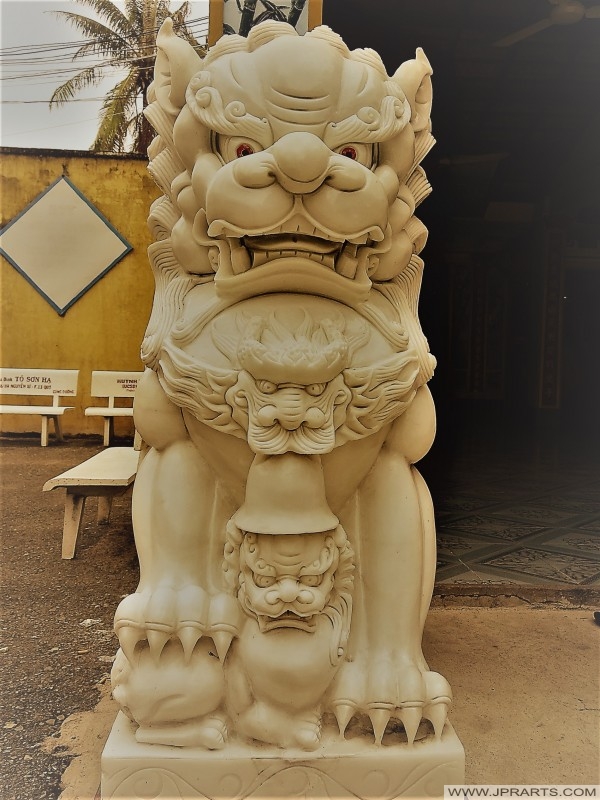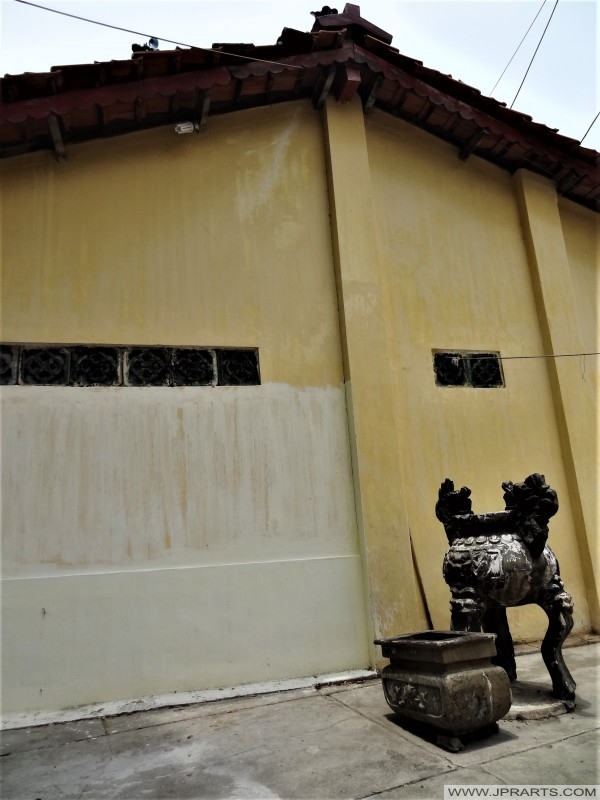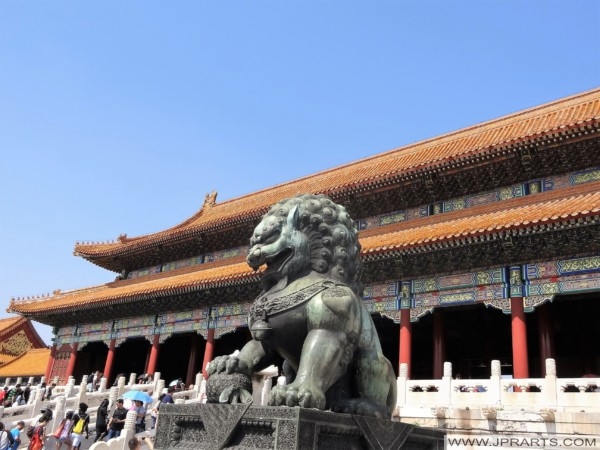Chinese guardian lions or Imperial guardian lions, traditionally known in Chinese simply as Shi (Chinese: 獅), and often called “Foo Dogs” in the West, are a common representation of the lion in imperial China. The concept which originated in China, subsequently spread to other parts of Asia including, Japan, Korea, Tibet, Thailand, Myanmar, Vietnam, Sri Lanka, Nepal, Cambodia and Laos.

Chinese Guardian Lions
Chinesischen Wächterlöwe
Leones Guardianes Chinos
中国监护人狮子的照片和视频
Hình ảnh và video của sư tử sư tử Trung Quốc
Singa Wali Cina
китайских львов-хранителей
Since the introduction of the lion symbolism from Indian culture especially through Buddhist symbolism, statues of guardian lions have traditionally stood in front of Chinese Imperial palaces, Imperial tombs, government offices, temples, and the homes of government officials and the wealthy, from the Han Dynasty (206 BC-AD 220), and were believed to have powerful mythic protective benefits. They are also used in other artistic contexts, for example on door-knockers, and in pottery. Pairs of guardian lion statues are still common decorative and symbolic elements at the entrances to restaurants, hotels, supermarkets and other structures, with one sitting on each side of the entrance, in China and in other places around the world where the Chinese people have immigrated and settled, especially in local Chinatowns.
ภาพถ่ายและวิดีโอของสิงโตผู้พิทักษ์ชาวจีน
中國監護人獅子的照片和視頻
Lion Gardien Chinois
Visit the Cheap Webshop for Blu-rays, Books and DVDs








